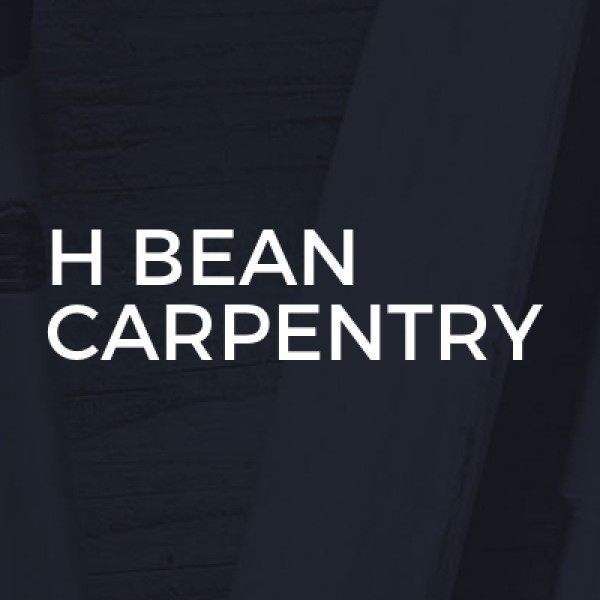Loft Boarding in Paddington
Welcome to Crown Roofing And Building, your trusted partner for all your building and renovation needs in New Barnet and across Barnet, L... read more »
Welcome to SAF Construction Consultant, your premier choice for construction services in South Tottenham and the wider Haringey, London a... read more »
Secta Building Services is your go-to expert for renovations, boiler and heating engineers, kitchen fitters, bathroom fi... read more »
Welcome to H Bean Carpentry, your go-to experts for all things carpentry and plastering in the heart of Blackfen. Proudly serving the Bex... read more »
Welcome to Rems Building Services Ltd, your trusted p... read more »
Welcome to O'Donovan Construction Management Ltd, you... read more »
Welcome t... read more »
Welcome to Madeira Construction Ltd, your trusted bui... read more »
Welcome to Brooklyn Block Paving, your trusted trades... read more »
A.N Build Ltd is a reputable constru... read more »
Welcome to TEAL CO Windows and Doors Ltd, a distingui... read more »
Welcome to J Sutton Building Services, your go-to exp... read more »
Ving Building Solutions Limited is y... read more »
Kaz Star Builders Ltd: Premier Builders in Ea... read more »
Welcome to A To Z Builders, your go-to experts for al... read more »
Welcome to Hall and Sons Ltd, your premier choice for... read more »
Welcome to G&J Builders, your trusted partner for lof... read more »
Hoxha Construction UK Ltd, a reputab... read more »
Search Loft Boarding in places nearby
Understanding Loft Boarding
Loft boarding is a practical solution for homeowners looking to maximise the storage potential of their homes. By installing a sturdy floor in the loft space, you can transform an underutilised area into a functional storage or living space. In Paddington, where space can be at a premium, loft boarding offers a clever way to make the most of your home.
Loft boarding involves laying down boards over the joists in your loft, creating a stable and safe surface. This process not only provides additional storage but also helps in insulating the home, potentially reducing energy bills. With the right approach, loft boarding can be a cost-effective way to enhance your home's value and functionality.
Benefits of Loft Boarding
There are numerous benefits to loft boarding, especially in urban areas like Paddington. Firstly, it increases the storage capacity of your home without the need for costly extensions. Secondly, it can improve the energy efficiency of your home by adding an extra layer of insulation. Lastly, a well-boarded loft can add to the overall value of your property, making it an attractive feature for potential buyers.
- Increased Storage: Loft boarding provides a safe and accessible area to store items that are not used daily, such as seasonal decorations or old furniture.
- Energy Efficiency: By adding insulation beneath the boards, you can reduce heat loss, keeping your home warmer in winter and cooler in summer.
- Property Value: A boarded loft can be a selling point, offering potential buyers additional usable space.
Loft Boarding in Paddington: A Local Perspective
Paddington, with its charming mix of historic and modern homes, presents unique opportunities and challenges for loft boarding. Many homes in this area have loft spaces that are perfect for conversion, but they may also have specific structural considerations due to their age and design.
Local contractors familiar with Paddington's architectural styles can provide valuable insights into the best practices for loft boarding in this area. They can ensure that the work is done in compliance with local building regulations and that the finished product complements the existing structure of your home.
Choosing the Right Materials
The choice of materials is crucial in loft boarding. The most common materials include chipboard, plywood, and OSB (Oriented Strand Board). Each has its pros and cons, and the best choice depends on your specific needs and budget.
| Material | Pros | Cons |
|---|---|---|
| Chipboard | Cost-effective, easy to install | Less durable, can swell if exposed to moisture |
| Plywood | Durable, moisture-resistant | More expensive, heavier |
| OSB | Strong, affordable | Not as smooth, can be difficult to cut |
Installation Process
Installing loft boarding is a straightforward process, but it requires careful planning and execution. The first step is to assess the loft space and determine the amount of boarding required. Next, insulation should be installed if needed, followed by the laying of the boards. It's important to ensure that the boards are securely fixed to the joists to prevent any movement or creaking.
Professional installation is recommended to ensure safety and compliance with building regulations. Experienced installers will have the necessary tools and expertise to complete the job efficiently and to a high standard.
Cost Considerations
The cost of loft boarding in Paddington can vary depending on several factors, including the size of the loft, the type of materials used, and whether you choose to hire professionals or undertake the project yourself. On average, you can expect to pay between £20 and £50 per square metre for professional installation.
While DIY installation can save money, it's important to consider the potential risks and challenges. Mistakes can lead to additional costs down the line, so it's often worth investing in professional services to ensure the job is done right the first time.
DIY vs Professional Installation
Deciding between DIY and professional installation depends on your skills, budget, and the complexity of the project. DIY installation can be a rewarding project for those with the necessary skills and tools, but it requires careful planning and execution.
- DIY Installation: Cost-effective, flexible scheduling, but requires time and skill.
- Professional Installation: Ensures compliance with regulations, high-quality finish, but more expensive.
Finding a Reliable Contractor in Paddington
When choosing a contractor for loft boarding in Paddington, it's important to do your research. Look for contractors with experience in the area and positive reviews from previous clients. Ask for quotes from multiple contractors to compare prices and services, and ensure that they are fully insured and accredited.
Word of mouth can be a valuable resource, so consider asking friends or neighbours for recommendations. A reliable contractor will provide a detailed quote and timeline for the project, and they should be willing to answer any questions you have about the process.
Legal and Safety Considerations
Before embarking on a loft boarding project, it's important to consider any legal and safety requirements. In Paddington, as in the rest of the UK, building regulations may apply, especially if the loft is to be used as a living space.
It's essential to ensure that the loft structure can support the additional weight of the boarding and any items stored there. A structural engineer can provide an assessment if there are any concerns about the load-bearing capacity of the loft.
Building Regulations
Building regulations are designed to ensure the safety and structural integrity of any alterations to a property. In the case of loft boarding, regulations may apply if the space is to be used as a habitable room. This includes considerations for fire safety, insulation, and access.
Consulting with a professional who is familiar with local regulations can help ensure that your project complies with all necessary requirements. Failure to comply with building regulations can result in fines and may affect the resale value of your home.
Safety Tips
Safety should be a top priority when boarding a loft. Here are some tips to ensure a safe installation:
- Ensure that the loft ladder is secure and in good condition.
- Wear appropriate safety gear, such as gloves and goggles.
- Check for any electrical wiring or plumbing that may be affected by the installation.
- Ensure that the boards are securely fixed to the joists to prevent movement.
Maximising Your Loft Space
Once your loft is boarded, it's time to think about how to make the most of the new space. Whether you plan to use it for storage or as a living area, careful planning can help you maximise its potential.
Storage Solutions
For those using the loft for storage, consider installing shelving or storage units to keep items organised and accessible. Clear plastic boxes are a great option for storing items while keeping them visible and protected from dust.
Label boxes clearly to make it easy to find what you need, and consider using vacuum bags for items like clothing or bedding to save space.
Creating a Living Space
If you're planning to use the loft as a living space, consider the layout and design carefully. Ensure that there is adequate lighting and ventilation, and choose furnishings that fit the space without making it feel cramped.
Consider adding skylights or windows to bring in natural light, and use light colours on the walls and ceiling to create a sense of openness. With the right design, a loft can be transformed into a cosy and inviting space.
Environmental Impact
Loft boarding can have a positive impact on the environment by improving the energy efficiency of your home. By reducing heat loss, you can lower your energy consumption and carbon footprint.
Choosing sustainable materials for your loft boarding can further enhance the environmental benefits. Look for materials that are sourced responsibly and have a low environmental impact.
Insulation Options
Insulation is a key component of loft boarding, and there are several options to consider. Fibreglass, mineral wool, and cellulose are popular choices, each with its own benefits.
- Fibreglass: Affordable, easy to install, but can irritate the skin.
- Mineral Wool: Fire-resistant, soundproofing properties, but more expensive.
- Cellulose: Made from recycled materials, excellent insulation, but can settle over time.
Reducing Energy Bills
By improving the insulation in your loft, you can reduce heat loss and lower your energy bills. This not only saves money but also reduces your home's carbon footprint, contributing to a more sustainable future.
Frequently Asked Questions
- Is loft boarding a DIY project? While it can be a DIY project, professional installation is recommended for safety and compliance with regulations.
- How much does loft boarding cost in Paddington? Costs can vary, but you can expect to pay between £20 and £50 per square metre for professional installation.
- Do I need planning permission for loft boarding? Planning permission is not usually required for loft boarding, but building regulations may apply if the space is to be used as a living area.
- What materials are best for loft boarding? Common materials include chipboard, plywood, and OSB, each with its own pros and cons.
- Can loft boarding improve energy efficiency? Yes, by adding insulation beneath the boards, you can reduce heat loss and improve energy efficiency.
- How do I choose a contractor for loft boarding? Look for experienced contractors with positive reviews, and ensure they are fully insured and accredited.
Loft boarding in Paddington offers a practical and cost-effective way to maximise your home's potential. By understanding the process, benefits, and considerations, you can make informed decisions and create a space that enhances your lifestyle and property value.
Send a message








